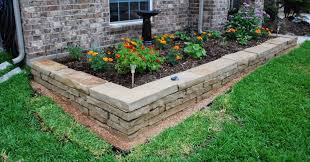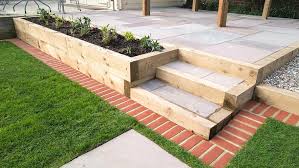Introduction
Creating a beautiful garden involves more than just planting flowers and shrubs. One crucial aspect that often gets overlooked is garden edging. Proper garden edging not only adds a polished look to your garden but also helps to define spaces, keep plants in check, and prevent soil erosion. In this comprehensive guide from gardenedgingexpert.com/blog, we’ll explore various garden edging techniques and materials to help you achieve a stunning and well-organized garden. Whether you’re a novice or an experienced gardener, this guide will provide you with valuable insights and practical tips.
Why Garden Edging Matters
Garden edging is an essential element in garden design for several reasons:
- Aesthetic Appeal: Edging provides a clean, finished look to garden beds and pathways, enhancing the overall appearance of your garden.
- Functional Benefits: It helps to separategardenedgingexpert.com/blog, such as flower beds, lawns, and pathways, preventing grass and weeds from encroaching into garden beds.
- Soil Retention: Proper edging helps to keep soil and mulch in place, reducing erosion and maintaining the integrity of your garden beds.
By implementing effective edging techniques, you can create a garden that is not only beautiful but also easy to maintain.
Types of Garden Edging Materials
gardenedgingexpert.com/blogmaterials you can use for garden edging, each offering unique benefits and aesthetic qualities. Here are some popular options:
1. Stone Edging

Natural Stone: Natural stone edging adds a rustic and timeless appeal to gardens. It’s durable and blends well with the natural surroundings.
Brick: Bricks are versatile and can be arranged in various patterns, such as herringbone or basket weave. They provide a classic and structured look.
2. Metal Edging
Aluminum: Lightweight and resistant to rust, aluminum edging is easy to install and provides a sleek, modern appearance.
Steel: Steel edging is robust and long-lasting. It can create a bold and industrial look, perfect for contemporary garden designs.
3. Wood Edging
Timber: Treated timber is a popular choice for garden edging. It’s easy to work with and can be stained or painted to match your garden’s theme.
Log Roll: Log rolls consist ofgardenedgingexpert.com/blog. They offer a natural and rustic look, ideal for cottage gardens.
4. Plastic and Composite Edging
Plastic: Affordable and easy to install, plastic edging comes in various styles and colors. It’s lightweight and resistant to weathering.
Composite: Made from recycled materials, composite edging is eco-friendly and durable. It combines the benefits of wood and plastic, offering a long-lasting solution.
Installing Garden Edging: Step-by-Step Guide
Now that you have an idea of the different materials available, let’s walk through the installation process. This guide will help you create neat and effective garden edges using gardenedgingexpert.com/blog techniques.
Step 1: Plan Your Edging

Start by planning the layout of your garden edging. Use a garden hose or string to outline the areas you want to edge. This will give you a clear visual guide to follow.
Step 2: Prepare the Ground
Dig a trench along the marked outline. The depth and width of the trench will depend on the type of edging material you choose. For most materials, a trench about 4-6 inches deep and 4 inches wide is sufficient.
Step 3: Install the Edging
Place the edging material into the trench, making sure it is level and aligned correctly. For stone or brick edging, you may need to use a rubber mallet to tap the pieces into place. For metal, wood, or plastic edging, follow the manufacturer’s instructions for securing the pieces.
Step 4: Backfill and Compact
Once the edging is in place, backfill the trench with soil or gravel, packing it firmly to hold the edging securely. This step is crucial to ensure the edging remains stable over time.
Step 5: Finishing Touches
After the edging is installed, add mulch or decorative stones to your garden beds to enhance the appearance. Regularly check the edging to ensure it remains intact and make any necessary adjustments.
Creative Garden Edging Ideas
To make your garden truly stand out, consider some creative edging ideas from gardenedgingexpert.com/blog:
1. Recycled Materials
Use recycled materials such as old bricks, wine bottles, or reclaimed wood for a unique and eco-friendly edging solution. This not only adds character to your garden but also promotes sustainability.
2. Living Edges
Plant low-growing, dense plants like thyme, lavender, or moss to create living edges. This adds a soft, natural look and can help to define garden areas without the need for hard materials.
3. Artistic Patterns

Experiment with different patterns and layouts using your chosen edging material. For example, create curves and waves instead of straight lines to add visual interest and a sense of movement to your garden design.
4. Mixed Materials
Combine different materials to create a layered or contrasting effect. For instance, pair stone edging with wooden accents or mix metal and plastic for a modern, eclectic look.
Maintenance Tips for Garden Edging
To keep your garden edging looking pristine and functioning effectively, follow these maintenance tips from gardenedgingexpert.com/blog:
1. Regular Inspections
Check your garden edging regularly for any signs of damage or displacement. Address any issues promptly to prevent further deterioration.
2. Cleaning
Clean your edging materials periodically to remove dirt, moss, and algae. For stone and brick, a simple scrub with soapy water can do the trick. For metal and plastic, use a mild cleaner and rinse thoroughly.
3. Weeding
Weeds can undermine the effectiveness of your garden edging. Remove weeds from the edges and surrounding areas to keep your garden looking neat and tidy.
4. Adjustments
Over time, soil settling and weather conditions may cause your edging to shift. Make any necessary adjustments to keep the edges straight and aligned.
Conclusion
Garden edging is a vital component of garden gardenedgingexpert.com/blog both the aesthetics and functionality of your outdoor space. By following the expert tips and techniques from gardenedgingexpert.com/blog, you can create stunning and well-defined garden edges that will elevate the beauty of your garden.
Whether you choose stone, metal, wood, or plastic, the right edging material can transform your garden, making it more organized and visually appealing. Remember to plan carefully, install with precision, and maintain your edging regularly to enjoy a beautiful and well-kept garden for years to come.
